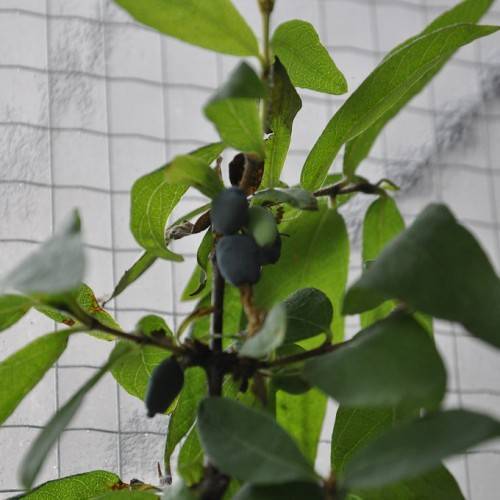
honeyberry
Lonicera kamtschatica
Cycle:
Perennial
Watering:
Average
Hardiness Zone:
3 - 7
Flowers:
Flowers In Spring
Sun:
Part shade
Fruits:
Fruits Ready In
Edible:
Yes
Leaf:
Yes
Growth Rate:
Low
Maintenance:
Low
Drought Tolerant:
Yes
Care Level:
Medium
watering
Honeyberry (Lonicera kamtschatica) should be watered once or twice a week, depending on your climate. If you live in a hot, dry climate, water the honeyberry more frequently. Conversely, in a cooler, wet climate, water the honeyberry less often. Make sure to water the honeyberry slowly and evenly to ensure that the roots are evenly hydrated. When it's time to water, add enough water to reach approximately 6 inches below the surface of the soil.
sunlight
Lonicera Kamtschatica requires at least 6 hours of sunlight each day in order to produce enough sugar in the fruits for sweetness. Afternoon sunshine is especially important for Honeyberry production, as this is when the fruit gets the most intense UV exposure, helping to create those delicious flavors. Overall, Honeyberries will produce the best fruit when they receive sufficient sunlight, good soil drainage, and proper care. By taking care of these basics, you can ensure your Honeyberries will delight you with sweet and juicy fruit each year.
pruning
The best time to prune Lonicera Kamtschatica is late winter or early spring when the plant is dormant. This is the time when the bush will be least likely to suffer shock due to removal of the foliage. If a bush is overgrown, it is important to prune it back to encourage the growth of new and better quality fruit. To prune a honeyberry bush, make sure to remove any weak, dead, or diseased branches and trim off any overhanging branches. It is important to prune honeyberries in a specific way as this will help balance out the fruiting branches. When pruning, cut back the canes that are more than two years old to the desired length. Doing this will promote the health of the bush and help prevent disease. Furthermore, pruning will help encourage a larger and more plentiful fruit crop. Properly pruned honeyberry bushes will bring forth sweet and delicious berries for many years to come.
